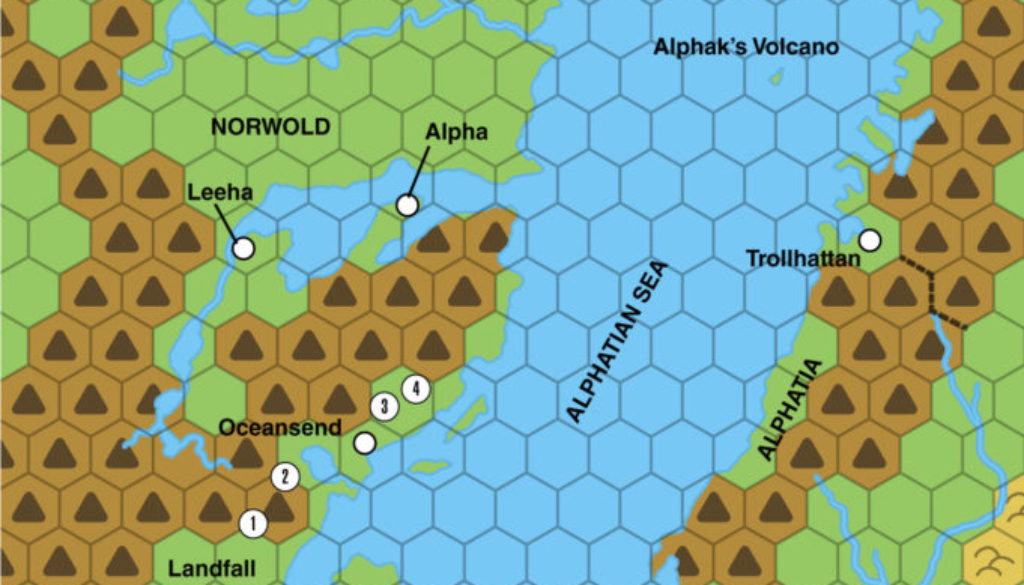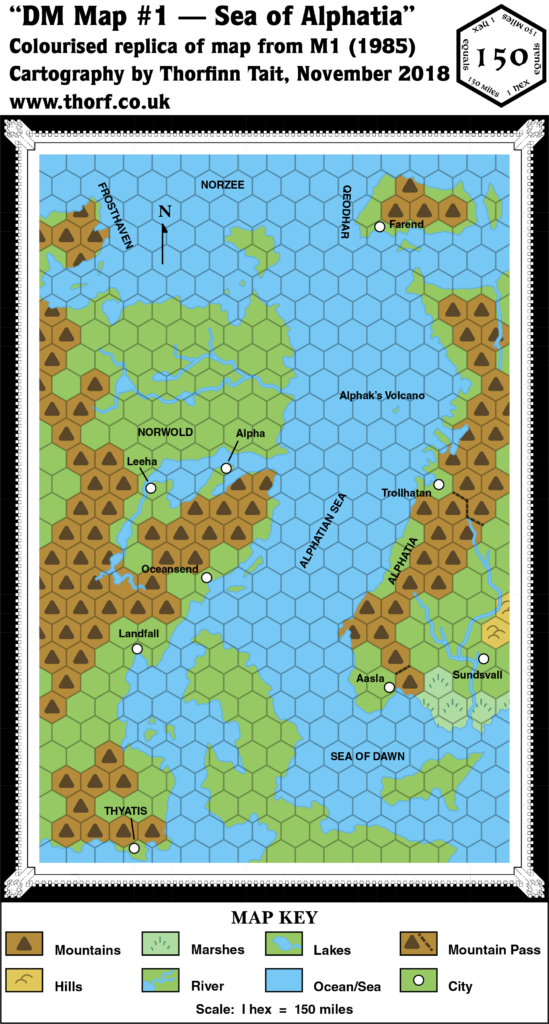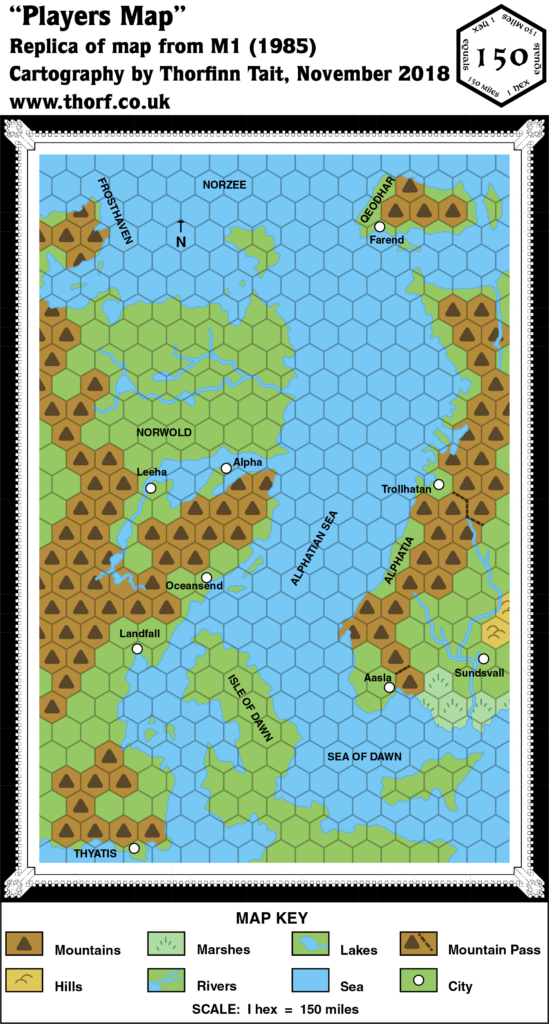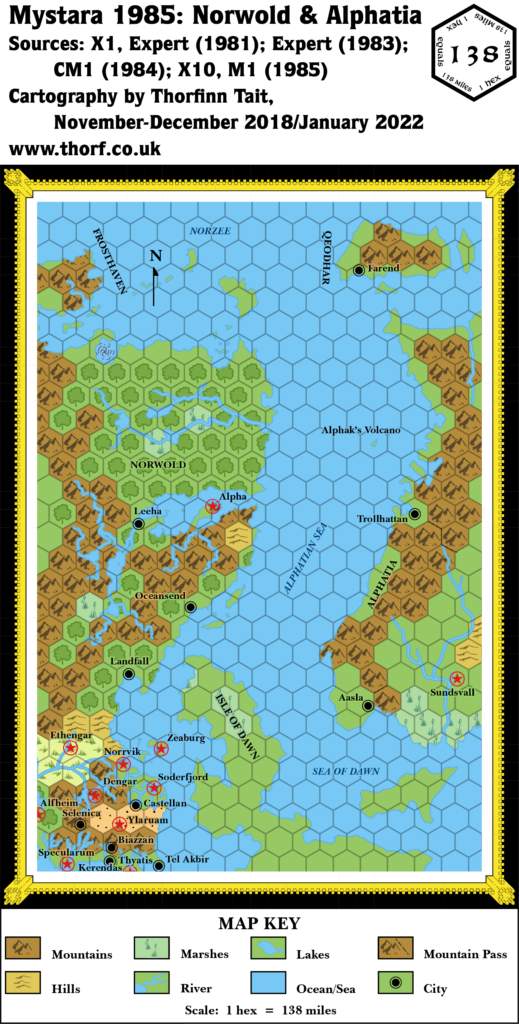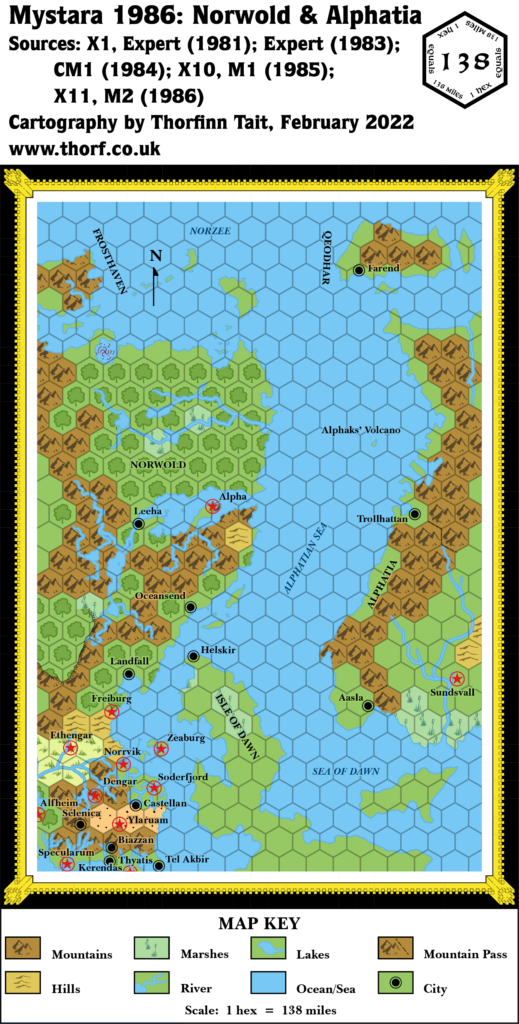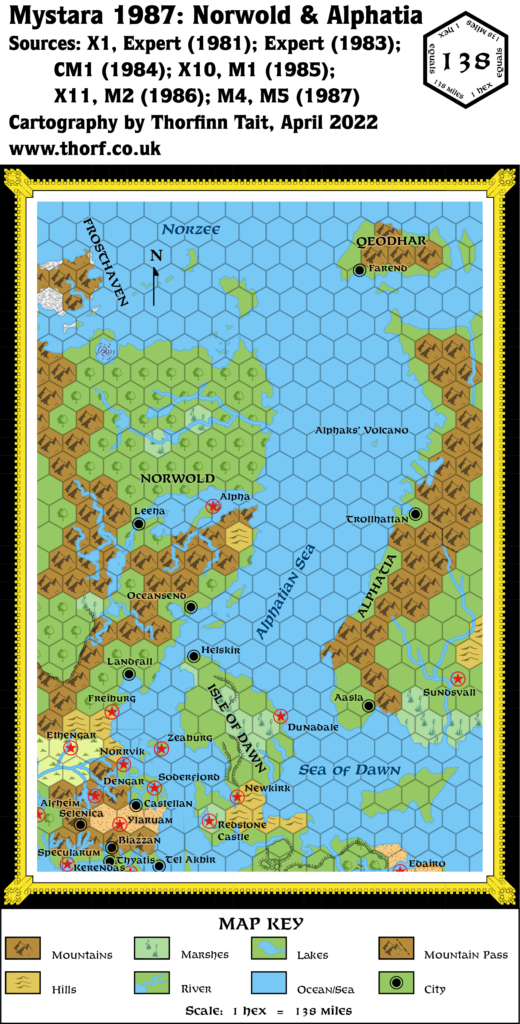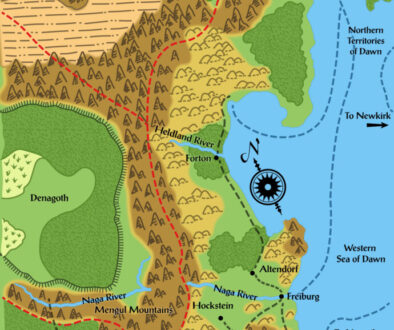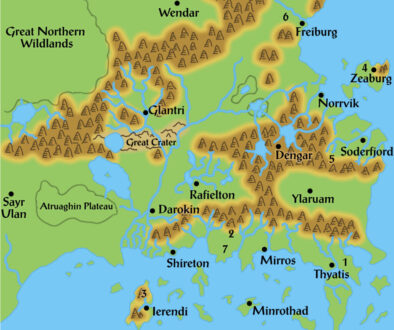M4 Norwold, 150 miles per hex
M4 only included one hex map of note, which was itself a straight up reprise of M1’s map. In fact, there are only two differences: the locations of the coins, each of which links to a much larger scale encounter map; and the small lake and river west-southwest of Oceansend, which is unique to this map.
The coin encounter maps are mostly too large scale to be relevant, and therefore outside the remit of the Atlas of Mystara.
The lake is rather more interesting. This lake only appears on this map, and on no other before or since; even later fan-made maps have either overlooked or disregarded it. And yet there it is, clear as day. Given the relative sparseness of detail in Norwold’s maps, it could make for a nice addition to maps of Norwold. Unfortunately, no mention is made of it in M4’s text, and it remains unnamed.
Replica Map (September 2020)
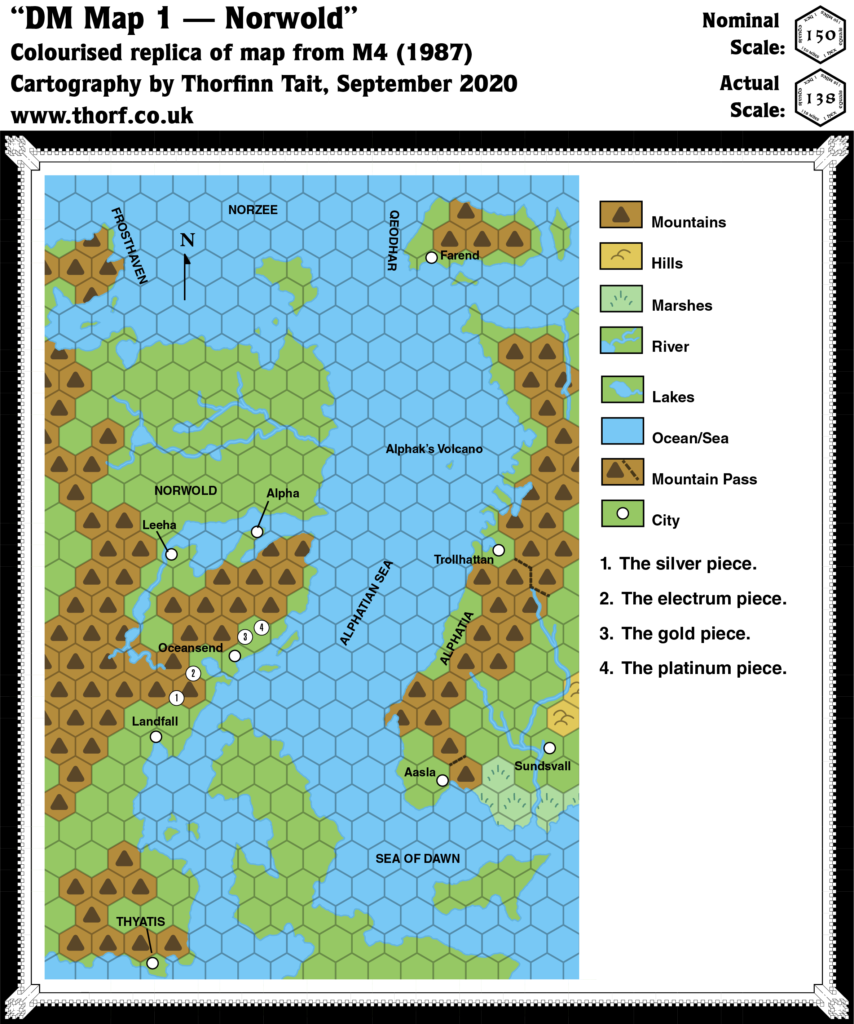
Sources
- M4 Five Coins for a Kingdom (1987) (PDF at DriveThruRPG)
- “DM Map 1”, page 2 (Cartography by William Reuter, based on M1 map by Dave LaForce)
Chronological Analysis
This is Map 56. It was published in June 1985. The updated version of this map has not yet been released. See also Appendix C for annual chronological snapshots of the area. For the full context of this map in Mystara’s publication history, see Let’s Map Mystara 1985.
The following lists are from the Let’s Map Mystara project. Additions are new features, introduced in this map. Revisions are changes to previously-introduced features. Hex Art & Fonts track design elements. Finally, Textual Additions are potential features found in the related text. In most cases, the Atlas adopts these textual additions into updated and chronological maps.
Additions
- Nothing of particular note on this map. The numbered “coin” labels all connect to much larger scale maps. Only M4 Lake Ashtagon, 1 mile per square is of any geographic significance.
Revisions
- Lakes — An unnamed lake has been added west-southwest of Oceansend, connected to the sea by a short river. Up until now this area had been blank terrain, and therefore presumed to be forested (as per CM1).

